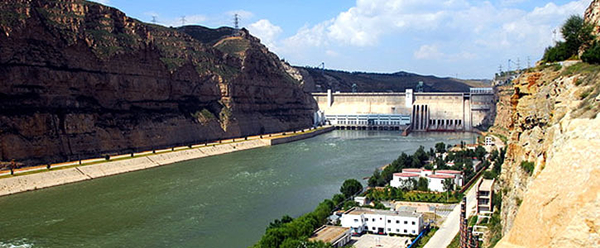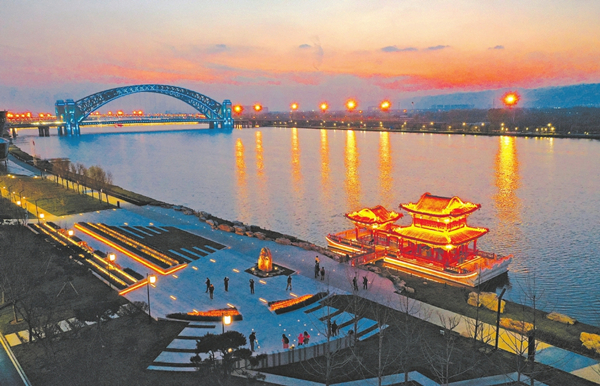Shanxi enhances water environment
Updated: 2022-01-12

Wanjiazhai reservoir in Shanxi province [Photo/shanxi.gov.cn]
Shanxi province in North China has been solving problems related to insufficient water resources, uneven water distribution, deterioration of water ecology and soil erosion in recent years.
With among the most serious water shortage problems of any province in China, Shanxi has promoted the construction of emergency water source projects and a comprehensive utilization network of water resources using 12 major rivers in the province, to move water from areas rich in water resources to those lacking.
During the 13th Five-Year Plan period (2016-20), the province's water supply optimal allocation capacity reached 8.6 billion cubic meters, and a water supply network running through the north and the south took shape.
The proportion of groundwater in the total water supply dropped to 38 percent in 2020 from 69.6 percent in 2000, with the water levels of local shallow groundwater level and large karst springs rising.

The scenery of Fenhe River at twilight [Photo/Shanxi Daily]
The Fenhe River, known as the mother river of Shanxi and feeding 25 percent of the province's population, has suffered from a sharp drop in groundwater levels and a high proportion of poor water quality since the 1970s.
For decades, Shanxi has been committed to the ecological protection and restoration of the Fenhe River basin.
The province has continuously supplied water to the main streams of the Fenhe River through major water diversion projects including the Wanjiazhai Yellow River Diversion Project.
Enterprises that heavily pollute the water environment are prohibited from being within 3 kilometers on both banks of the main streams in the upstream areas and the source of the Fenhe River, as well as within 2 km on each bank of the main streams in the middle and lower reaches of the Fenhe River.
Urban parks have been built along the Fenhe River in several cities.
As a result, over half of the ecological restoration of the main streams of the Fenhe River has been completed, and the groundwater level in the Fenhe River Valley has been on the rise for many years.
By June 2020, the water quality at 13 national-level inspection centers along the Fenhe River had risen to Grade V – the lowest level on the national five-tier water quality system – and no more water below this grade is now entering the Yellow River from the Fenhe River.
Shanxi has also coordinated the management of mountains, rivers, forests, farmland, grasslands and sandy areas to tackle serious soil erosion.
It has planted more than 2,666 square kilometers of trees on the Taihang Mountains and Lyuliang Mountains, and carried out ecological restoration work on seven major rivers, five lakes and 19 large karst springs. The forest and grassland coverage rate in cities and counties in the Yellow River basin is near 60 percent.
After systematic management, the area of soil erosion in Shanxi was reduced to 58,900 sq km in 2020 from 108,400 sq km in the 1980s.



